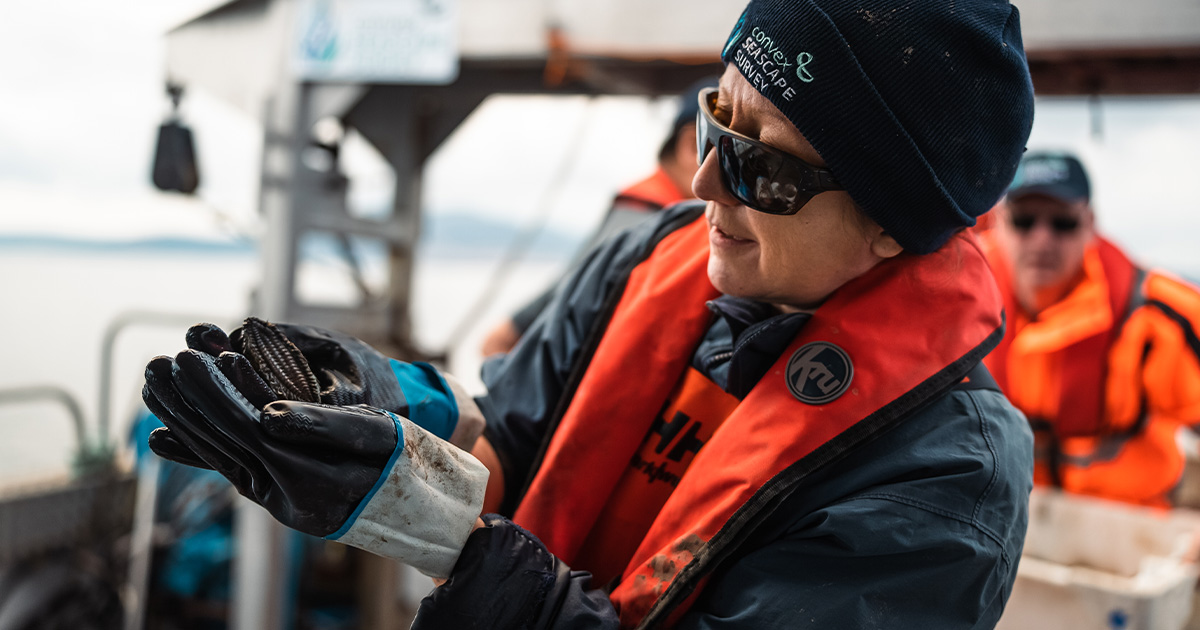The Convex Seascape Survey, at COP 28, announced the latest findings from its ambitious, five-year global research program providing critical data and insight on how the world needs to fully incorporate the ocean into efforts to slow climate change.
Much of our present understanding of how animals in the seascape mud move carbon around is based on just a handful of species globally. The most recent fieldwork in Millport, Scotland, mapped how the burrowing behavior of little-known sea creatures disturbs sediment, known as “bioturbation”, increasing on previous efforts by 150%. This part of the research uncovers a vast quantity of new science – and is being affectionately referred to by scientists as “The Great British Bioturbation-athon.”
Taking science previously used to track how micro plastic is ingested and moved around sediment by seafloor animals, scientists analyzed replicants for 17 new species, the first time such a range has been assessed in detail. The research revealed that different types of creatures living in and on the seafloor muds, such as worms, clams, brittle stars, and sea slugs, all play important roles in drawing carbon from the water and burrowing it into the seabed. These findings provide an unprecedented level of information on the potential for such animals to store carbon - meaning reduced levels of carbon in the atmosphere which is better for the planet.
The survey, which began in Scotland, and plans to explore other international seascape locations such as South Africa and Patagonia, is a partnership between University of Exeter, Convex Group and Blue Marine Foundation. It brings together a pioneering collaboration of world-leading experts who are delivering new, reliable, open-source data that will educate, inspire, and enable informed decisions on ocean use.
Gabriella Gilkes, Convex Seascape Survey Program Manager said “The ocean covers 70 percent of the earth’s surface and makes up 95 per cent of the planet's biosphere, making it the largest area capable of capturing and storing carbon. But where is that carbon? How did it get there? Where did it come from? And what is the role of life and biodiversity on ocean carbon storage? These are the questions we are hoping to be able to answer with our research.”
She continues “The Convex Seascape Survey turns the focus onto an immense but neglected and misunderstood region of the ocean—the continental shelves—which could be a crucial ally in action against climate change.
Continental shelf seabed habitats comprise almost 8% of the ocean floor, and yet we have little idea of the carbon sequestering capacity of these vast areas.”



